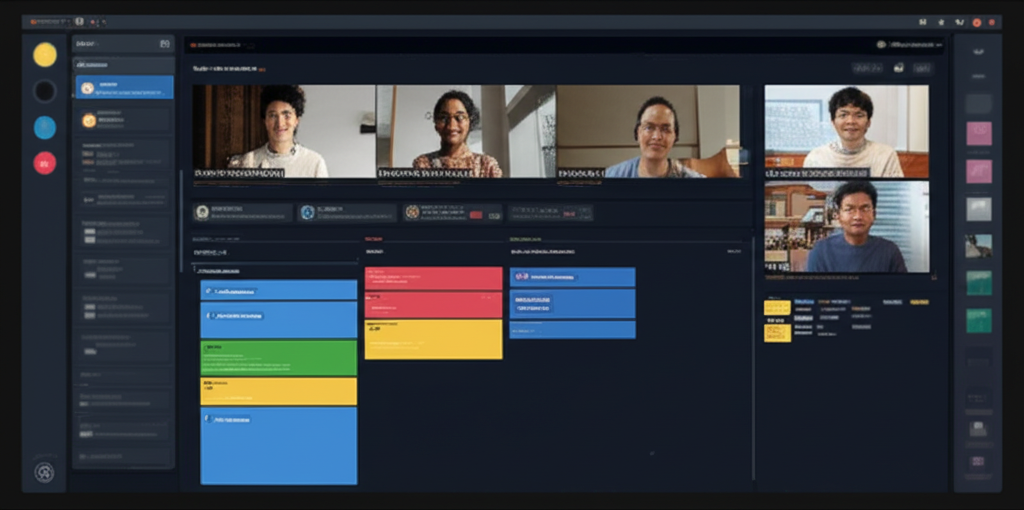Remote Work Excellence: Collaboration Tools That Keep Teams Connected
Discover the essential collaboration tools and strategies that enable remote teams to maintain productivity, communication, and strong team culture across any distance.

The Remote Work Revolution
Remote work has transformed from a nice-to-have perk to a business necessity. Companies that master remote collaboration don't just survive—they thrive, accessing global talent, reducing overhead costs, and often achieving higher productivity than traditional office-based teams.
The key to remote work success lies in choosing the right collaboration tools and implementing them strategically. It's not about replicating the office experience online—it's about creating something better: a connected, productive, and flexible work environment that empowers teams to do their best work from anywhere.
"Remote work isn't about working from home—it's about working from anywhere, with anyone, on anything that matters."
Essential Communication Tools
Effective communication is the foundation of successful remote teams. The right tools create seamless information flow and maintain the human connection that drives collaboration.
Instant Messaging Platforms
Tools like Slack, Microsoft Teams, or Discord provide the informal communication that happens naturally in office environments. The key is creating structured channels that organize conversations by topic, project, or team.
- Project channels: Dedicated spaces for specific initiatives
- Department channels: Team-specific discussions and updates
- Social channels: Casual conversation and team bonding
- Announcement channels: Company-wide important updates
Asynchronous Communication
Not every conversation needs to happen in real-time. Asynchronous tools like Loom for video messages, Notion for documentation, and email for formal communications allow teams to work across time zones effectively.
Project Collaboration Platforms
Remote teams need centralized platforms where work happens, progress is tracked, and everyone stays aligned on goals and deadlines.
All-in-One Workspaces
Platforms like Notion, Monday.com, or Asana provide comprehensive project management with integrated communication, file sharing, and progress tracking.
File Collaboration
- Google Workspace: Real-time document collaboration
- Microsoft 365: Enterprise-grade file sharing and co-authoring
- Dropbox: Secure file storage with version control
- Figma: Design collaboration and prototyping
Best Practice: Establish clear file naming conventions and folder structures. Remote teams need predictable organization to find information quickly.
Virtual Meeting Excellence
Video meetings are essential for remote teams, but they need to be purposeful and well-executed to avoid "Zoom fatigue" and maintain engagement.
Meeting Best Practices
- Clear agendas: Share objectives and talking points in advance
- Time limits: Respect everyone's schedule with defined start/end times
- Recording options: Allow team members to catch up asynchronously
- Interactive elements: Use polls, breakout rooms, and screen sharing
Platform Selection
Choose video conferencing tools based on your team's needs: Zoom for large meetings, Google Meet for quick check-ins, or specialized tools like Gather for virtual office experiences.
Building Remote Team Culture
Strong team culture doesn't happen automatically in remote environments—it requires intentional effort and the right tools to foster connection and shared values.
Virtual Team Building
- Regular coffee chats: Informal video calls for casual conversation
- Virtual game sessions: Online games and activities for team bonding
- Show and tell: Team members share personal interests or achievements
- Celebration channels: Dedicated spaces for recognizing wins and milestones
Knowledge Sharing
Create systems for capturing and sharing institutional knowledge. Tools like Confluence, Notion, or internal wikis ensure important information doesn't get lost in chat messages.
Security and Compliance
Remote work introduces new security challenges. Ensure your collaboration tools meet enterprise security standards and provide proper access controls.
Essential Security Features
- Two-factor authentication: Protect accounts with additional security layers
- End-to-end encryption: Secure sensitive communications and files
- Access controls: Manage who can see and edit different types of content
- Audit trails: Track user activity for compliance and security monitoring
Creating Your Remote Work Stack
The best remote collaboration setup is one that fits your team's specific needs, work style, and industry requirements. Start with core communication and project management tools, then gradually add specialized solutions as your remote work practices mature.
Remember, tools are just enablers—the real success of remote work comes from establishing clear processes, maintaining regular communication, and fostering a culture of trust and accountability. With the right combination of technology and practices, remote teams can achieve levels of productivity and satisfaction that surpass traditional office environments.